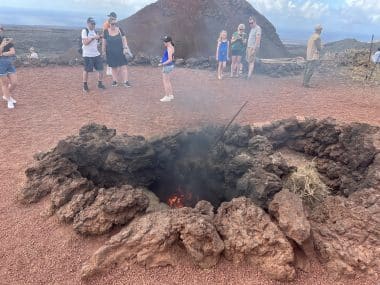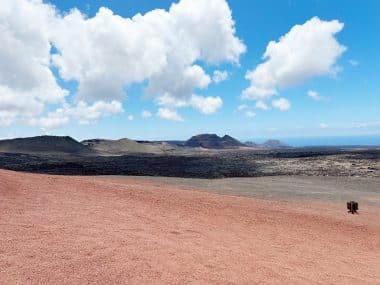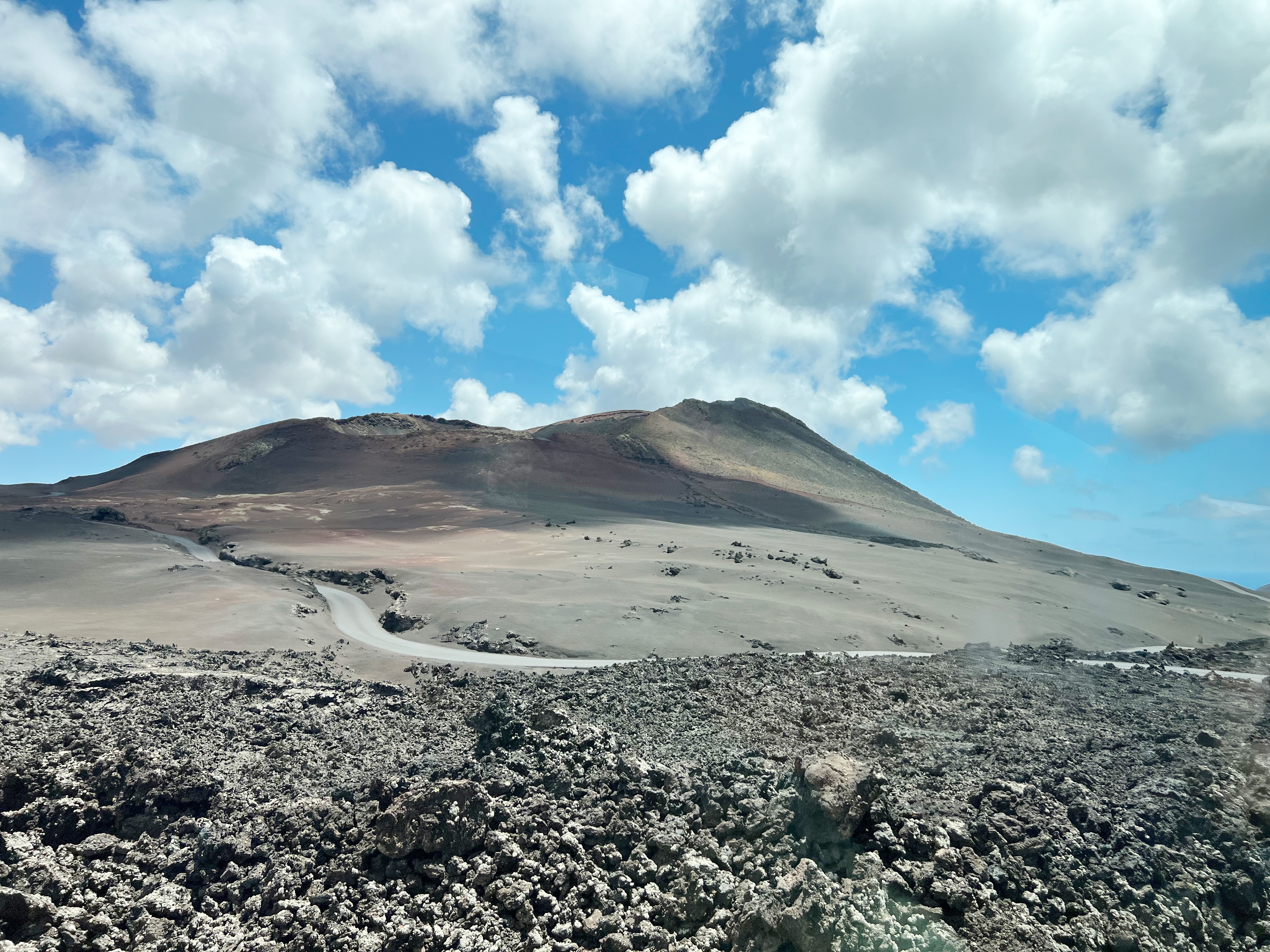Lanzarote is one of the Canary Islands, located in the west of North Africa. The special scenic and tourist attraction of the island is due to its volcanic origin. In particular, the last major volcanic eruptions from 1730 to 1736 and 1824 shape the image of Lanzarote today. Lava rock and sparse flora are characteristic of the island. Today’s Timanfaya National Park is located in the center of the eruptions of that time. A visit to the park is therefore a unique experience.
Timanfaya National Park

A visit to Timanfaya National Park is an unforgettable experience. The lava and rock landscapes seem to be from another world, wrapped in red and black hues. The imposing volcanoes radiate grandeur and convey a magical feeling. The craters and mountains bear witness to the elemental force of nature and bring it into the focus of attention.
Since 1970, the 50 km² area around the island’s most important volcanoes has been declared a national park. The landscape is characterized by the petrified lava masses that were formed during the volcanic eruptions in the 18. and 19th century were spewed out by the volcanoes. On the coast, these are in direct contrast to the beauty of the Atlantic Ocean.
Fauna and flora are weak in the Timanfaya National Park, as well as on the rest of the island. Although the first pioneer plants such as lichens and mosses have settled again since the volcanic eruptions, apart from a few succulents and thorny shrubs (the so-called Aulaga Majorera) that get by with particularly little water, not much grows on the rough ground. The animal diversity is also not particularly pronounced here. Lizards and geckos, small rodents and, of course, birds can be observed again and again.
A special feature is the area around the Islote de Hilario. Here, the temperatures are a few meters below ground at a remarkable 400° Celsius. This is made clear during guided tours as part of demonstrations.
How to get to Timanfaya
You can enter the park via the LZ-67, which connects the villages of Tinajo and Yaiza. The road runs through the middle of the Montañas del Fuego: the “Fire Mountains”. Even from the road, the large lava boulders of the region offer a breathtaking sight. Alternatively, there is the possibility to reach the national park by bus and also take a round trip there. There are also fixed hiking routes that lead along some particularly remarkable geological features.
Special offers

Directly on the LZ-67 is the so-called camel resting place. At manageable prices, it is possible to book a dromedary tour here. On the back of such a camel, visitors experience the park from a completely new perspective.
A special highlight of the Timanfaya National Park is the volcano restaurant “El Diablo”. “El Diablo” was designed and opened by the Canarian architect César Manrique. The restaurant, located in the middle of the Fire Mountains, was built above a 400° C hot lava pool. The cooks use the heat emanating from the lava to prepare their dishes, which are cooked on special grills and cooking stoves. If you take a trip to the national park, you should definitely plan a visit to “El Diablo” right from the start. Last but not least, the restaurant also offers a breathtaking view.
The geological peculiarity of the area is also presented during guided tours. With the help of branches and shrubs, the guides demonstrate how the high temperatures of the earth set organic matter on fire. At special devices, the tour guides also have the opportunity to let water flow into the earth’s interior via a pipe system. This creates impressive steam fountains.

The Timanfaya National Park should definitely be on the program when visiting Lanzarote . The geological features of the island culminate here in an impressive way. The sublime landscape both directly on the coast and a little further inland testifies not only to the power and violence of nature. Especially from an aesthetic perspective, it is more than impressive. The tourist offer of the park administration is diverse. Thus, even travelers who do not want to explore the area on their own will have the opportunity to learn a lot about the geological history of Lanzarote.




